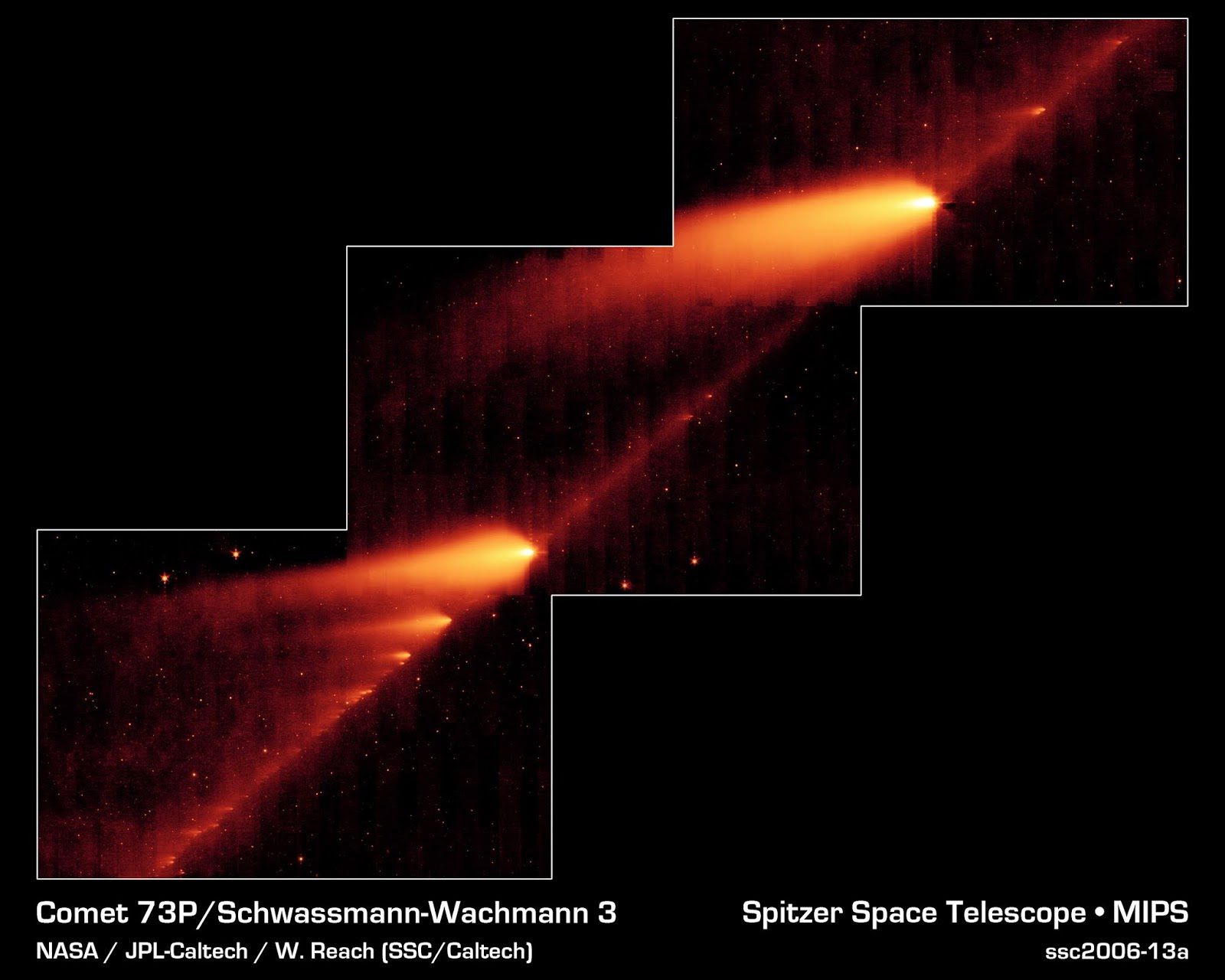
© NASA/JPL-Caltech/W.Reach [SSC/Caltech]
Last month, Bill Napier (co-creator of the coherent catastrophism theory, with Victor Clube) published his latest paper (
MNRAS, vol. 488, p 1822-1827)
on the impact hazard from disintegrating comets in the inner solar system. His focus is on a large 100 km comet in an Encke-like orbit. It is a sophisticated work that extends his earlier estimates, this time by combining explicit orbital simulations with a calibrated model of comet fragmentation (published by de Sisto et al. in 2009).His aim, like mine in
Prehistory Decoded, is to estimate the hazard to Earth from the kind of comet thought to have become trapped in our inner system a few tens of thousands of years ago. We know, pretty much, that this happened because of the massive zodiacal dust cloud and correlated fragments that remain in orbit.
He concludes that we can expect one or two impact collisions over the last 20,000 years, or so, with energy over 6000 Mt, and that this energy will likely be unevenly distributed across a hemispherical region. This is roughly 600 times the energy of the Tunguska impact, which itself was large enough to demolish one of our biggest modern-day cities (like Greater London).
This broadly supports my own estimates in
Prehistory Decoded, based on simple fragmentation pathways and Opik's collision formula, where I find that we can expect one or two collisions with an energy of at least 10,000 Mt, and perhaps another ten with energy over 1,000 Mt, from the same sized comet over the same timescale. Great!
Actually, Bill's new work is quite conservative. His impact energy estimates are based on a typical swarm of 100 billion tonnes, and assume that a collision can only occur if a debris swarm is ejected from the giant progenitor comet when the giant comet and Earth's orbits intersect (which occurs twice roughly every 3,000 years). But he shows in the same paper that typically, a debris swarm will have a mass that is two or three times greater than this. And it is also true that collisions with a debris swarm can occur even if Earth's orbit and the giant comet's orbit don't exactly intersect, because the comet swarm can cover such a large area (thousands of times Earths projected area). Overall, he probably underestimates the collision hazard by at least a factor of 10.
It follows, then, that my own estimates of the collision hazard in
Prehistory Decoded also underestimate the true collision hazard.
The take-home message is that if the 'trapped' giant comet scenario is correct (as it almost certainly is), then we should expect to see calamities on the scale of the proposed Younger Dryas impact, as well as plenty of other somewhat smaller disasters, over the last few tens of thousands of years. Because of the giant comet's apsidal precession, most, but certainly not all, of these can be expected to fall within a high risk period of a few hundred years every 3,000 years.The next period of high-risk activity is expected around 3,000 AD.

Reader Comments
to our Newsletter